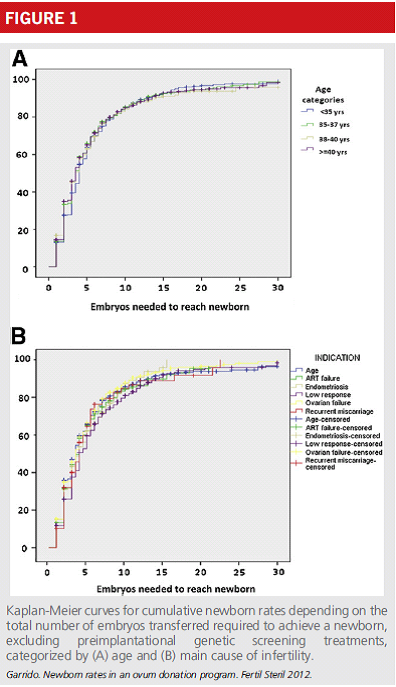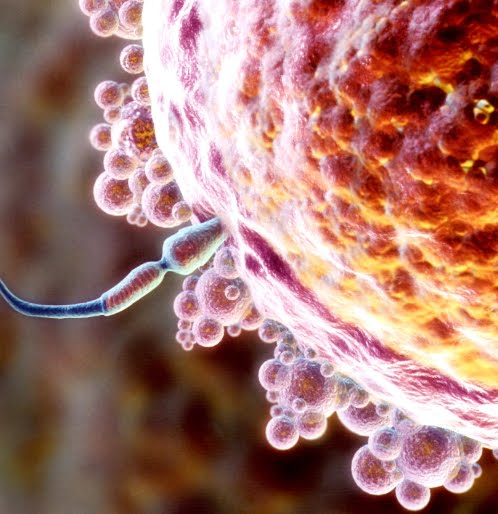Measures of Success
Fertility medicine is quite remarkable for its almost obsessive focus on quantitative outcomes. This is probably partly due to the binary nature of what we do (pregnant vs. not pregnant, baby vs. no baby, etc.) and partly to the elective (and therefore competitive) nature of the “fertility business,” a trend that was undoubtedly intensified by the 1992 federal law requiring all IVF clinics to report their outcomes to the CDC.
While “pregnancy rate” (percent of women getting pregnant per IVF attempt) has historically been the mainstay of how outcomes are reported, many fertility specialists advocate alternate measures of success. One approach emphasizes the importance of a baby (“live birth”) over a mere pregnancy (with the difference being miscarriages and stillbirths). In a different vein, others have advocated adjusting the time frame from “per cycle” success to “cumulative” success, arguing that what is really most important to a patient is what the chances are that at the conclusion of a course of treatment, she will achieve success. This last point is particularly germane in an infertile population, as there is usually some degree of “natural selection” that occurs over the course of multiple treatment attempts: the “least infertile” couples (i.e. those with the most mild problems) tend to get pregnant sooner, leaving behind an increasingly infertile group to try again the next time. Statistically, this often leads to worse outcomes in subsequent treatment cycles (one can think of this as “diminishing returns” on the treatment investment after multiple failed attempts).
Two large studies using newer measures of treatment success have been published recently (links below). The first, published in the New England Journal of Medicine, analyzed cumulative live birth data from the national (U.S.) database compiled by the Society for Assisted Reproductive Technology. The authors “linked” data belonging to individual women who underwent multiple IVF cycles and calculated cumulative success rates after multiple attempts. They found several trends:
a) Amongst women using their own eggs, cumulative success increases dramatically in the first 3 attempts and increases more slowly during IVF attempts #4-6 (very few women pursued 7 or more cycles)
b) Whereas age is a big factor in cumulative success amongst women using their own eggs (i.e. younger women have more success), “older” women using donor eggs do not have significantly decreased cumulative success despite their age, as compared with younger women using donor eggs
c) Blastocyst (day 5 or 6) embryo transfers are associated with higher cumulative success than cleavage stage (day 2 or 3) embryo transfer (Although this may not be a true cause-and-effect relationship, since the women having blastocyst transfers tend to be younger and/or have more available embryos from which to choose)
The second study, published in Fertility and Sterility, looked specifically at cumulative success in egg donation cycles, and used a new measure they termed “cumulative newborn rate per number of embryos transferred” – a rate using number of newborns (as opposed to pregnancy) as the numerator and number of embryos transferred -- instead of number of treatment cycles performed -- as the denominator. This outcome measure will thus take into account the efficiency of the treatment, recognizing that transferring 3 embryos in one cycle is not the same as transferring one embryo in one cycle.
This group of researchers showed that most of the babies (65%) are achieved with the first 5 embryos transferred, 85% with the first 15 embryos, and cumulative success ultimately levels off between 90-95% after 16-25 embryos have been transferred. Interestingly, and in accordance with many previous studies (such as the one mentioned above), neither the age of the recipient nor the diagnosis (i.e. reason for pursuing oocyte donation) had any significant influence on cumulative outcomes.
- Cumulative birth rates with linked assisted reproductive technology cycles.
- Cumulative newborn rates increase with the total number of transferred embryos according to an analysis of 15,792 ovum donation cycles.



 Joshua U. Klein, MD
Joshua U. Klein, MD